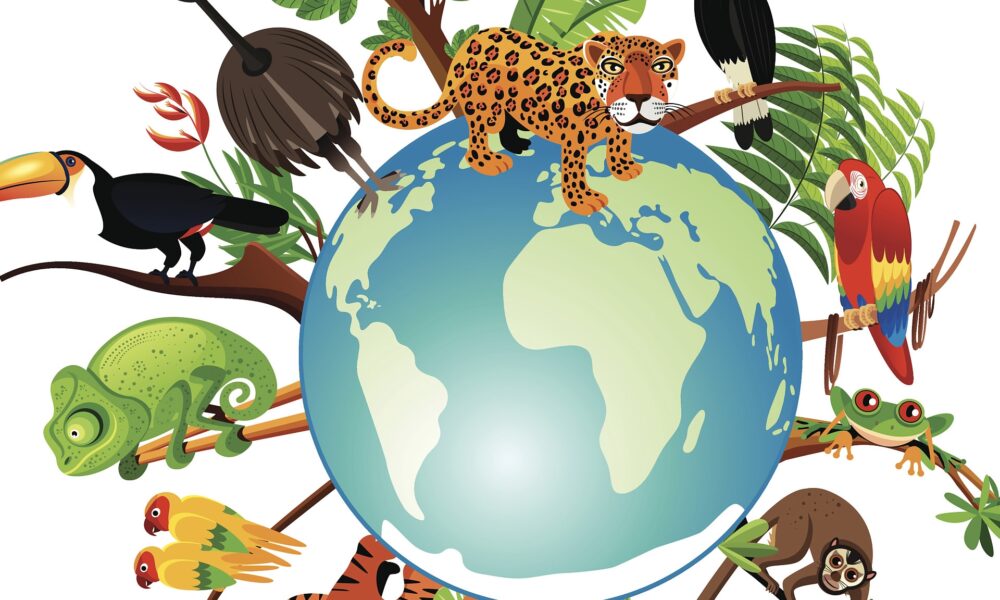How does biodiversity support sustainable natural resources?

A healthy ecosystem provides humans with many benefits based on biodiversity. These services are essential for the sustainability of natural resources and include:
- Provisioning services – Biodiversity provides food, fresh water, wood, fibre, and genetic resources. The variety of species ensures a diverse range of resources used sustainably.
- Regulating services – Diverse ecosystems help regulate climate, water purification, pollination, and pest control. For instance, forests with high biodiversity are more effective at carbon sequestration, contributing to climate regulation.
- Supporting services – Biodiversity supports nutrient cycling, soil formation, and primary production, which are fundamental to the sustainability of all ecosystems.
- Cultural services – The diversity of life provides aesthetic, spiritual, educational, and recreational values, contributing to human well-being and sustainable resource management.
Enhancing ecosystem resilience
A diverse ecosystem is more resilient to disturbances, a consequence of biodiversity. A resilient natural resource system is essential for long-term sustainability. Here’s how biodiversity contributes to ecosystem resilience:
- Functional redundancy – Multiple species can perform similar ecological functions in diverse ecosystems. If one species declines, others step in to maintain ecosystem processes, ensuring the continued provision of ecosystem services.
- Response diversity – Different species respond differently to environmental changes. A diverse ecosystem is more likely to include species that thrive under new conditions, maintaining overall ecosystem function.
- Genetic diversity – Genetic diversity provides the raw material for adaptation to changing environments within species.
Supporting sustainable agriculture
A sustainable agriculture depends on biodiversity for food security and land use sustainability. Here’s how biodiversity supports sustainable agriculture:
- Crop diversity – A wide variety of crop species and varieties ensures food security by providing alternatives if certain crops fail due to pests, diseases, or climate changes.
- Pollination – Many crops depend on animal pollinators. A diverse pollinator community ensures adequate pollination and sustainable crop production.
- Pest control – Biodiversity supports natural pest control by hosting predators of crop pests, reducing the need for chemical pesticides and supporting sustainable farming practices.
- Soil health – Soil biodiversity, including microorganisms and invertebrates, is crucial for maintaining soil fertility and structure and supporting sustainable land use.
Supporting water resource sustainability
Biodiversity plays a crucial role in maintaining the quality and quantity of water resources. Here’s how:
- Water purification – Diverse aquatic ecosystems, including wetlands, naturally filter and purify water, supporting sustainable water resources.
- Flood regulation – Diverse plant communities in watersheds help regulate water flow, reduce flood risks, and support sustainable water management.
- Drought resilience – Soil biodiversity improves water retention, enhancing ecosystem resilience to drought and supporting sustainable water use.
Promoting sustainable tourism
Biodiversity supports sustainable tourism, a vital economic resource for many regions:
- Attraction – Diverse ecosystems and species are significant attractions for eco-tourism, supporting sustainable economic development.
- Ecosystem health – Biodiversity maintains the health and beauty of natural areas, ensuring their long-term viability as tourism resources.
- Cultural value – Biodiversity often holds cultural significance, supporting cultural tourism and sustainable community development.
As we face growing environmental challenges, recognising and protecting biodiversity becomes increasingly essential. We invest in our future by geolutins valuing and conserving the diversity of life on our planet. To ensure a sustainable future, we must appreciate, protect, and understand the intricate web of life.






